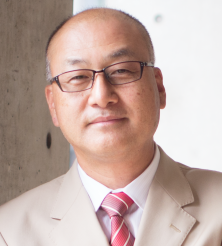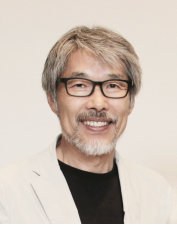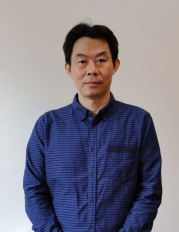Important Date:
April 1st, 2022
Call for abstract submission
May 20th, 2022
Deadline for accepting paper abstracts
June 25th, 2022
Inform the author of the accepted paper abstract to submit full paper
July 20th, 2022
Deadline for accepting papers
December 1-2nd, 2022
Conference date
Keynote Speech
v Meng Jianmin, Academician of Chinese Academy of Engineering, ASC Vice President and Chief Architect of Shenzhen General Institute of Architectural Design Research Co. Ltd.
v Shin-ichi TANABE, AIJ President, Professor of Waseda University
v Lee, Sang-Leem, CEO of SPACE GROUP
v Zhang Songmin, Vice Chief Architect of Central-South Architectural Design Institute Co.,Ltd.

Meng Jianmin
Academician of Chinese Academy of Engineering, ASC Vice President and Chief Architect of Shenzhen General Institute of Architectural Design Research Co. Ltd.
Presentation Title: The Development Trends of New Hospitals
|
Abstract: Hospital architecture is characterized by complexity and dynamism: involving both complicated functions and processes, and rapid iterations in technology, operation and maintenance along with the dynamic development. Based on the practice and research of Benyuan Healthcare Design Team in recent years, this report conducts case studies on Yangtze River Delta International Medical Center, Huazhong University of Science and Technology Union Shenzhen Hospital (Nanshan Hospital), The University of Hong Kong-Shenzhen Hospital, Luohu District Hospital of Maternity and Child Care in Shenzhen, and Guangming Campus of Shenzhen Traditional Chinese Medicine Hospital. In doing so, the report summarizes and expounds on seven development trends of new hospitals in China, namely hospital-city integration, which promotes medical-industry-oriented urban development; diversified functions, which enables hospitals to shift from discipline to service; multi-purpose spaces, which maximizes land utilization in high-density urban context; resource centralization, which allows the hospital management to shift its focus from cutting costs to improving services; intelligent operation and maintenance, which helps create smart hospitals driven by big data; ecological environment, which supports sustainable development under carbon peak and carbon neutrality targets; diverse styles, which enriches the once monotonous hospital design form.
|

Shin-ichi Tanabe
AIJ President, Professor of Waseda University
Presentation Title: Healthy Buildings and Carbon Neutrality
|
Abstract: People in the modern world nowadays spend about 90% of their lives indoors. The quality of the indoor environments we inhabit is crucial for maintaining and improving our health, comfort, and productivity. Proper ventilation is an extremely important safeguard against the spread of infectious agents such as the SARS-CoV2 virus. To date, however, many of the goals of energy-efficiency policies have focused on energy consumption alone. In some cases, the comfort and health of building occupants have been neglected altogether. Efforts need to be directed towards reduced energy consumption by buildings without compromising the quality of their indoor environment. We need more scientific evidence to clarify the impacts of indoor environment on human health and productivity. In 2015, the signatories to the Paris Agreement pledged a common commitment to limiting global warming to well below 2 degrees Celsius (preferably to 1.5) compared to pre-industrial levels. The IPCC’s sixth report, published on August 9, 2021, states that human activities have unequivocally warmed the atmosphere, ocean, and land. Widespread and rapid changes in the atmosphere, ocean, cryosphere, and biosphere have occurred. Energy demand is projected to rise in the Asian region due to economic development. In particular, the IEA has predicted that global cooling in the world demand will approximately triple by 2050. About one-third of the world's greenhouse gas emissions are in the building sector, including housing. Air-conditioning and ventilation account for about half of the energy consumption of a typical office building. Net Zero Energy Buildings (ZEB) and Houses (ZEH) are key to current and future efforts to limit greenhouse emissions. If the labor cost of a typical company operating out of an office is 100, the rental cost of the building is 10 and the energy cost is about 1. Good indoor environment is an essential precondition for a prosperous society. Human-centered research is needed if the carbon neutrality problem is to be solved. My lecture discusses some of the latest technologies and findings expected to contribute to the realization of carbon neutrality and comfortable and healthy environment. |

Lee, Sang-Leem
CEO of SPACE GROUP
Presentation Title: A or B
|
Abstract: Development and conservation have long been the subject of controversy, but the answer is still not found and the debate continues. The more important the area is, the hotter the debate is. The reality that the entire earth is under the influence of an abnormal climate due to global warming is at a stage where special measures must be implemented beyond the stage of controversy. By looking at the creation process of Jeju Island, which is registered as a World Natural Heritage Site by UNESCO, you can learn the geology, shape, and natural environment characteristics, and briefly look at modern events based on the records in history. International Convention Center Jeju(ICC), Wolryeong Renewable Energy Pilot Complex, Jeju 4·3 Peace Park, Udo Hundertwasser Park, etc, which has been designed by space group over the past 30 years, will be compared to the past, present and future of the location, and why development and preservation are needed at this point. Jeju Island, 455km south of Seoul, is a volcanic island on the continental shelf completed in the fourth period after volcanic activity began in the late third stage of the Cenozoic Era. It has beautiful tourist resources such as Seongsan Sunrise(Ilchulbong) Peak and Udo Island, and 360 oreum (small volcanic bodies). Until the Joseon Dynasty, it was a small island with a population of about 50,000, but it has steadily increased to about 700,000 now. In addition, the number of tourists has exceeded 15 million in recent years, raising concerns about over-tourism. Conservation in biosphere reserves is a concept that preserves various biosphere resources while developing them to gain economic benefits, and active conservation can be achieved through sustainable development. |

Zhang Songmin
Vice Chief Architect of Central-South Architectural Design Institute Co.,Ltd.
Presentation Title: Integration and Sharing – Designing for Healthy Cities
|
Abstract: On the basis of sorting out the development of healthy cities, combining with Wuhan current urban developments, it reach to a conclusion that the abnormal changes and unbalanced issues in urban resources result to serve cities problems by analyzing the urban risk factors those generally affect human life safety and wellness. This lead to the design strategy of integration and sharing. Through the domestic and overseas cases, combining with the author’s projects practice post Wuhan Covid-19 epidemic, this paper analyses the construction strategies of sports and healthcare facilities, and how significant role they play in building healthy cities. It as well explores design methodology for usual and epidemic time from sports and healthcare facilities from resource integration and sharing aspect, in order to assist healthy city construction. |

